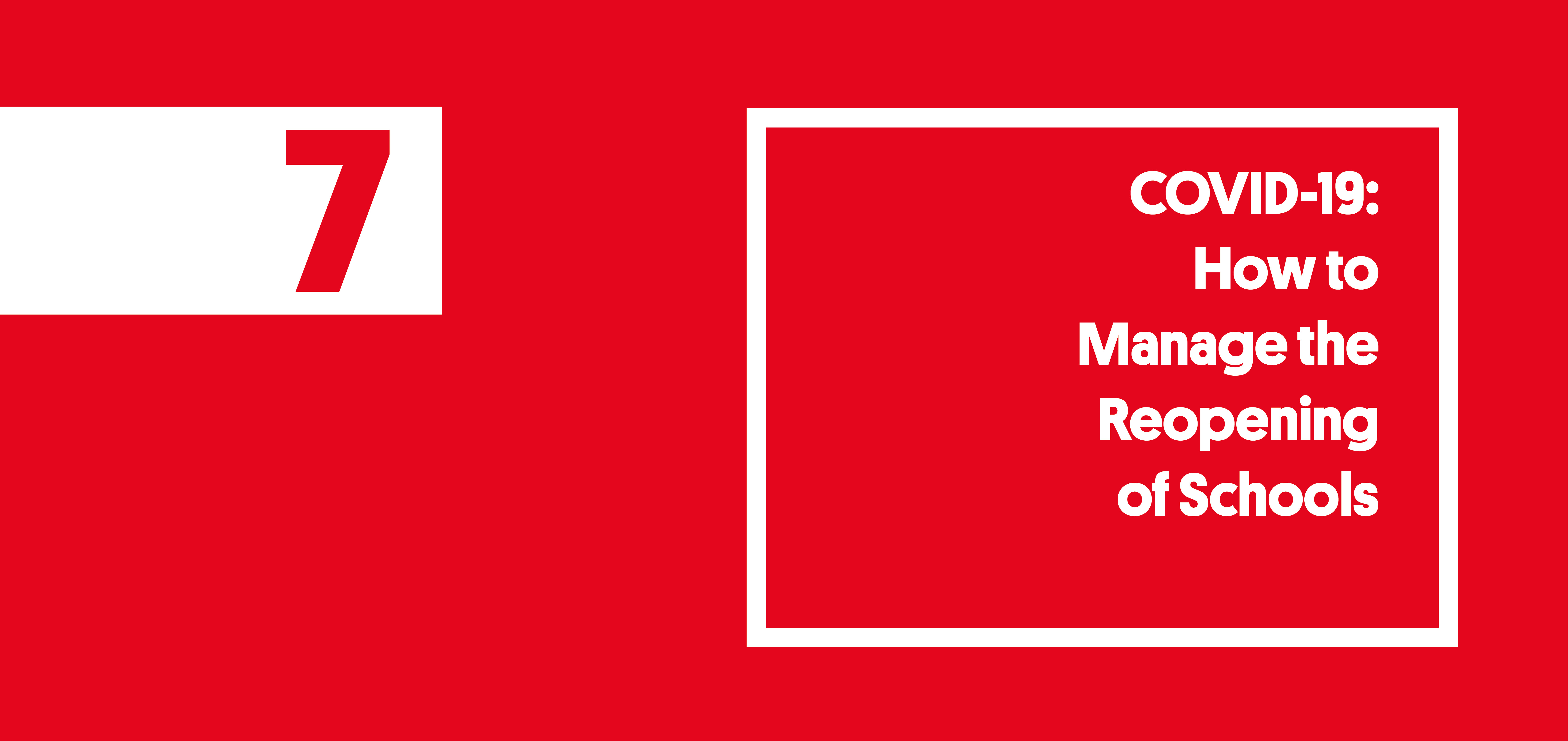COVID-19: How to Manage the Reopening of Schools?
Series | COVID-19 & response strategy #7
29.04.2020This document is part of a series of discussion notes addressing fundamental questions about the COVID-19 crisis and response strategies. These documents are based on the best scientific information available and may be updated as new information comes to light.
Written by Jordi Sunyer, Research Professor and head of the ISGlobal Childhood and Environment programme, the document describes how to manage the reopening of schools, from the risks that it could entail to how to prevent possible contagions.
Both an infected boy and girl can spread the virus. The maximum intensity of contagion is during the period that goes from the two days before presenting symptoms to the eight days after the appearance of the symptoms. But, in some cases, this period can be extended to more days before and several weeks later.
Between 25% and 50% of infected people do not develop any symptoms at any time. Despite the little that is known about the infectivity of asymptomatic subjects, it is suspected that these, like patients with few symptoms, generate a significant part of the infections. Not knowing that they are sick, they have more contact with less precautions than the sick.The highest frequency of infections is by close contact (less than two meters) with a carrier or by contact with the hands of surfaces where the virus is deposited.
Is the virus in the air?
The virus is transmitted in small particles, between 5 and 10 microns. Several laboratories have observed that these particles remain suspended in the air for periods of several hours, and the virus remains contagious in them (even beyond three hours). This is very relevant to avoid contagion in closed spaces with little ventilation. In open spaces, there is preliminary evidence showing that, while doing physical exercise, a carrier can release more contaminated particles than at rest.
Can the new coronavirus be transmitted through the air within a work room or classroom?
In closed spaces, the coronavirus can remain in the air being infectious for several hours. There is evidence that if a closed space is not ventilated, the presence of a carrier can infect those who share that space, beyond the recommended distance of two meters.
What is known about the new coronavirus in the child population?
In boys and girls (people under the age of 18), COVID-19 disease is less severe than in the adult population. Relatively few boys and girls have been hospitalized, and symptoms such as fever, cough, or shortness of breath are less frequent in children than in adults. Still, exceptionally, serious cases in childhood and some deaths have been reported. Boys and girls with COVID-19 may not have a fever or cough.
How can carrier children be detected?
The child population (and the rest of the school personnel) that present flu or catarrhal symptoms, cough or fever should not be on school grounds. Since part of the infections occur from boys or girls or adults without symptoms, carriers could only be detected with tests from nasopharyngeal smears or blood. However, this should be repeated periodically, and cost and feasibility reasons limit your practice at this time.
Should spatial distancing and daily preventive behaviors be maintained at school?
These measures continue to be important for all age groups, since patients with less serious diseases and those without symptoms have an important role in the transmission of the disease. Therefore, both in the classroom and on the patio, the spatial distance of two meters of separation should be maintained. At the same time, before entering and leaving the classroom and on the playground, boys and girls should wash their hands with soap and water or appropriate antiseptic preparations.
How often should classrooms be ventilated?
Opening windows for ventilation of closed spaces, such as classrooms, should be done several times a day.
What is the usefulness of the masks?
Several studies have established that the use of surgical masks could prevent the spread of coronaviruses, therefore its use is recommended to stop the spread of the SARS-CoV-2 virus. In particular, they reduce the emission of viruses by infected people, which contributes to reducing transmission by asymptomatic or pre-symptomatic carriers.
What would be the best strategy in the yard?
Due to the possibility of contagion with carriers, it would be advisable to maintain the separation of two meters in the yard. Due to the difficulty of maintaining this physical distance during recess, it would be advisable to reorganize the exit to the patio and practice physical activity.
What aspects of schools should be considered?
Diversity by age should be addressed in the application of the above aspects. They seem very difficult to apply to children under the age of six. Schoolchildren should be trained in hygienic behavior, wearing masks and, above all, how to maintain spatial distances without creating phobic attitudes.




